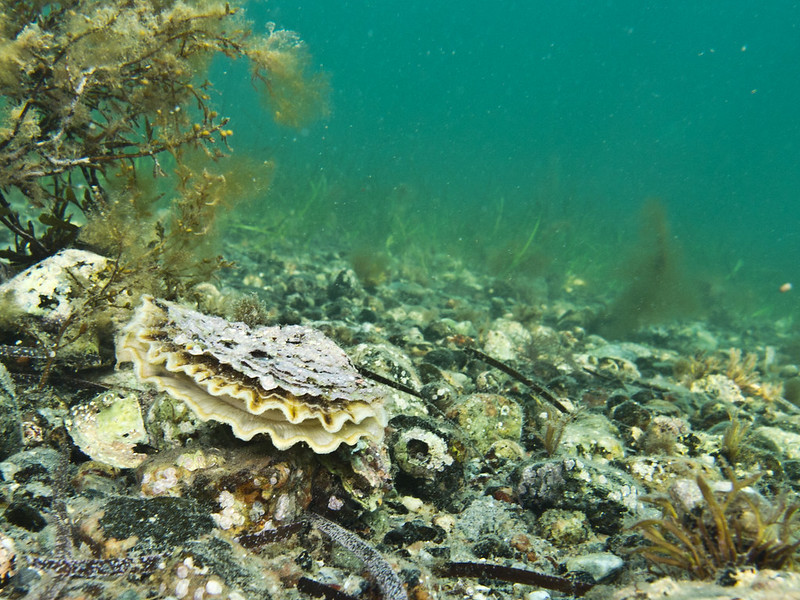Capable of purifying 140 litres per day, the unassuming European flat oyster (Ostrea edulis) plays a vital role in removing toxins from seawater, however, a 95% population loss over the past two centuries due to overfishing, pollution and habitat destruction makes it more vital than ever to boost their numbers to restore British marine ecosystems.
Offering a variety of benefits to their home environments of estuaries and coastal habitats, the role oysters play cannot be overstated. As natural filters, their gills constantly pump water removing tiny particles such as plankton, algae and other organic matter. This process maintains water clarity by reducing the levels of suspended sediment and pollutants.
Clean water naturally benefits all species within the affected ecosystem. Oysters remove excess nutrients such as nitrogen and phosphorus (often a result of agricultural activities) which cause algal blooms leading to ‘dead zones’ due to oxygen depletion killing wildlife.
Where possible oysters prefer to bunch together creating extensive oyster reefs which themselves form a crucial part of British ecosystems. These complex and three-dimensional structures provide essential habitats for a variety of marine species. Many fish seek shelter and breeding opportunities within the nooks and crannies, while numerous invertebrates attach themselves to the oyster shells, creating thriving microhabitats. Oyster reefs serve as essential nurseries and refuges, promoting biodiversity and supporting the life cycles of many marine organisms.
Though their populations remain heavily depleted, once established oysters are incredibly adaptable and resilient. For example, most individuals begin life as males becoming females as they mature. Some even switch back and forth each year to match reproductive demands.
The protection offered by oyster reefs is particularly valuable in the face of environmental challenges such as rising sea levels and coastal erosion. Oysters possess the ability to attenuate wave energy, reducing the impact of storm surges and tidal forces on coastlines. By creating a natural buffer, they help to stabilize shorelines and protect vulnerable coastal habitats, including marshes and seagrass beds which are currently home to other critical species in Britain such as curlews and seagrass itself.
Furthermore, the economic benefits of oyster ecosystems cannot be overlooked. Oysters have been popular as a food source in Britain since the Roman era with thriving fisheries. These contribute to local economies and provide a valuable source of livelihood for coastal communities. Sustainable oyster harvesting practices, combined with appropriate management strategies, ensure the continued prosperity of these fisheries while maintaining the ecological balance.
In addition to their economic value, oysters offer exciting opportunities for habitat restoration and conservation efforts. In some areas such as The Thames Estuary and The Solent, oyster restoration projects have been implemented to help revive declining populations and rebuild oyster reefs.
In recent years, oysters have also become a focal point in discussions about climate change mitigation and adaptation. Oyster reefs, along with other coastal ecosystems, have the potential to sequester significant amounts of carbon dioxide from the atmosphere.

Underwater oyster in habitat. Marten Hanson

European Flat Oyster from Loch Fyne, Scotland Taishonambu
